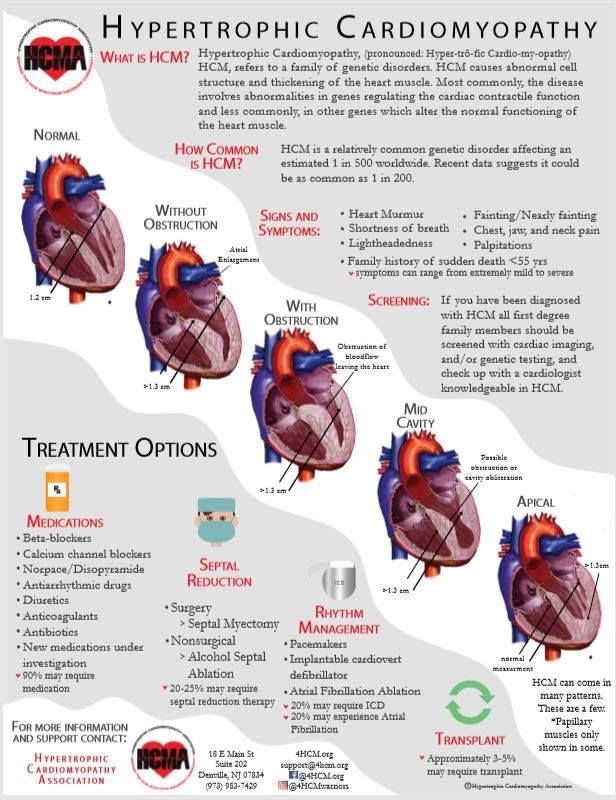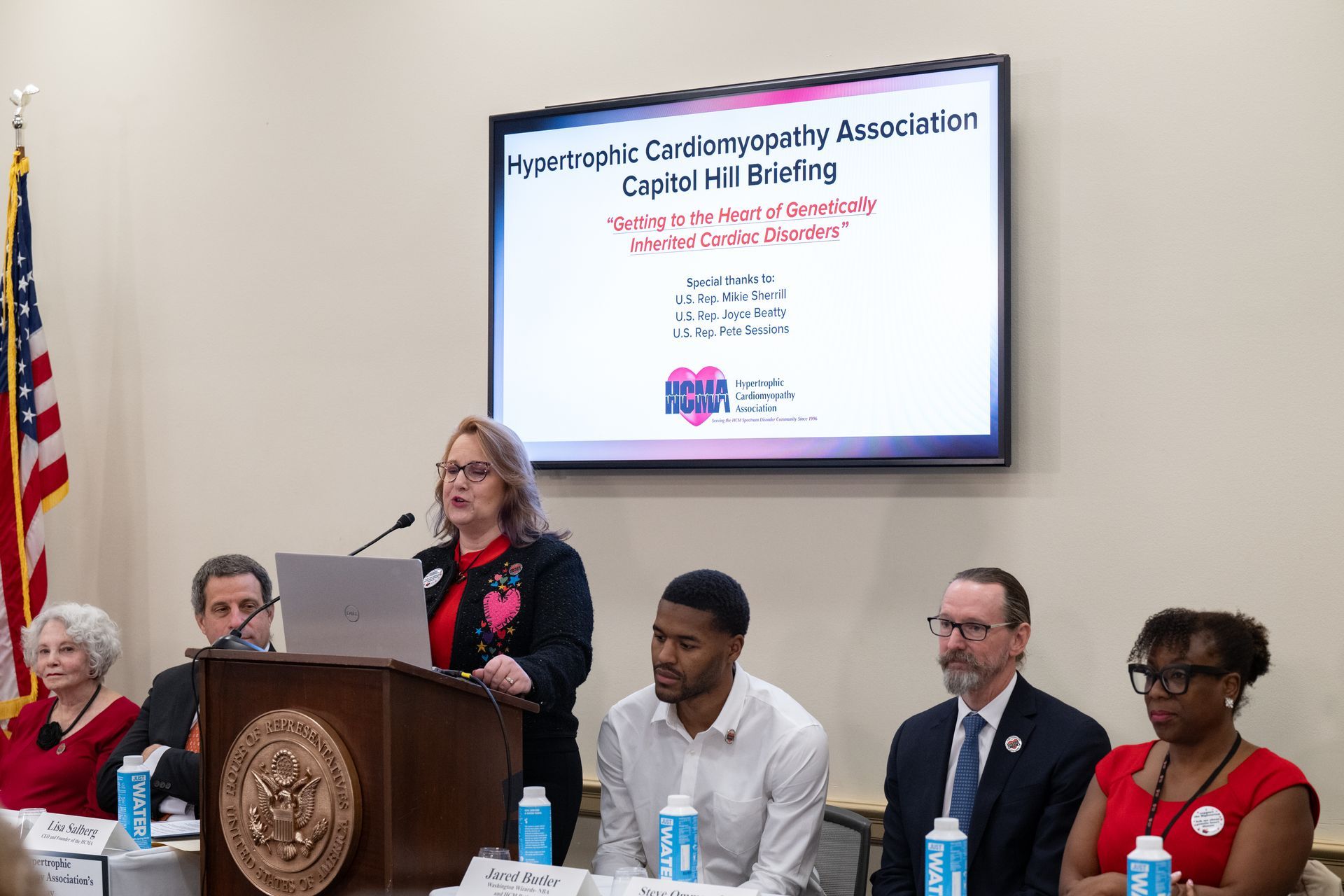Patient Support
WHEN DOES HYPERTROPHIC CARDIOMYOPATHY DEVELOP?
HCM patients can be diagnosed at any age, from birth to age 80+, there are even cases of those in their 90's with new diagnoses. Although hypertrophy may be present at birth or in childhood, it is much more common for the heart to appear normal then.
Occasionally, hypertrophic cardiomyopathy is the cause of a stillbirth. It can also develop during infancy, with heart failure, which is sometimes fatal. Most commonly in these poor outcomes HCM is present as part of a syndrome or one of the many HCM spectrum disorders rather than the more common sarcomeric mutations.
Most commonly, hypertrophy develops in association with growth and is usually apparent by the late teens or early twenties. Once hypertrophy appears, there is rarely a significant change in muscle thickness in the years of adult life. Other aspects of the heart may change over time including condition of the mitral valve, degree of obstruction, and left atrial size.
Family Screening for HCM
Children and Adolescents
Children and adolescents with HCM usually come to attention when:
- A family screening is performed after an adult in the family is found to be affected.
- A doctor observes a heart murmur and the patient is evaluated by a cardiologist.
- An abnormal ECG is found before a medical procedure.
- The person appears to have athletically-induced asthma, and is given more advanced screening.
The average age of diagnosis within the HCMA database is 39 years. About half of adults with HCM present with symptoms. In the other half, the diagnosis is made during family screening or following the detection of a murmur or abnormality on routine electrocardiogram (ECG).
A growing number of HCM patients are being identified later in life and are referred to as "adult onset." In older medical literature, the occurrence of adult onset HCM appeared rare; now we know it to be far more common. As a result, the HCM specialists now encourage those with a family history of HCM, who have not had genetic testing, to be screened every 5 years after the age of 25, for the rest of their lives. If symptoms occur sooner, they are urged to be screened sooner.

Search our video archive for more content more content from Lisa and her guests on Tales from the Heart, Featured Centers of Excellence from the Big Hearted Warriors Tour, HCM Awareness Day archives, information on Camzyos and other therapies, and upcoming or active trials.
Citations
Maron, B.J. and Salberg, L. Hypertrophic Cardiomyopathy: For patients, their families and interested physicians. Blackwell Futura: 1st edition 2001,81 pages; 2nd edition 2006, 113 pages; 3rd edition pending publication 2014
Gersh, B.J., Maron, B.J., Bonow, R.O., Dearani, J.A., Fifer, M.A., Link, M.S., et al. (2011). 2011 ACCF/AHA guidelines for the diagnosis and treatment of hypertrophic cardiomyopathy. A report of the American College of Cardiology Foundation/American Heart Association Task Force on practice guidelines. Journal of the American College of Cardiology and Circulation, 58, e212-260.
Maron BJ, McKenna WJ, Danielson GK, Kappenberger LJ, Kuhn HJ, Seidman CE, Shah PM, Spencer WH, Spirito P, ten Cate FJ, Wigle ED. American College of Cardiology/European Society of Cardiology Clinical Expert Consensus Document on Hypertrophic Cardiomyopathy. A report of the American College of Cardiology Task Force on Clinical Expert Consensus Documents and the European Society of Cardiology Committee for Practice Guidelines Committee to Develop an Expert Consensus Document on Hypertrophic Cardiomyopathy. J Am Coll Cardiol 2003;42:1687-1713 and Eur Heart J 2003;24:1965-1991.

 Translate
Translate